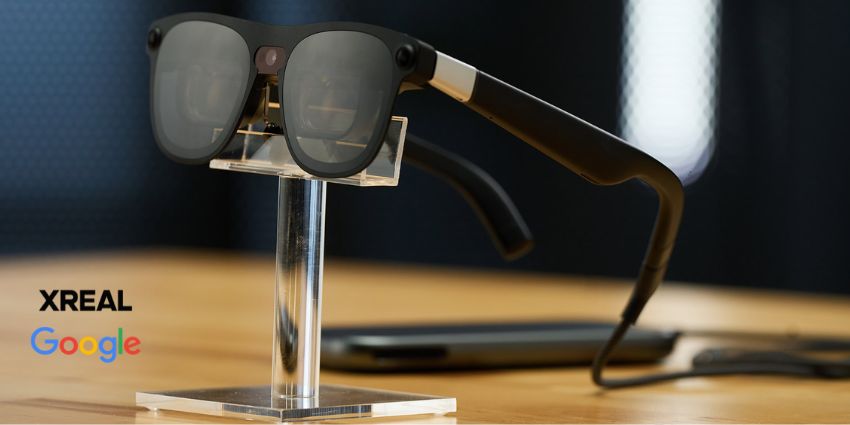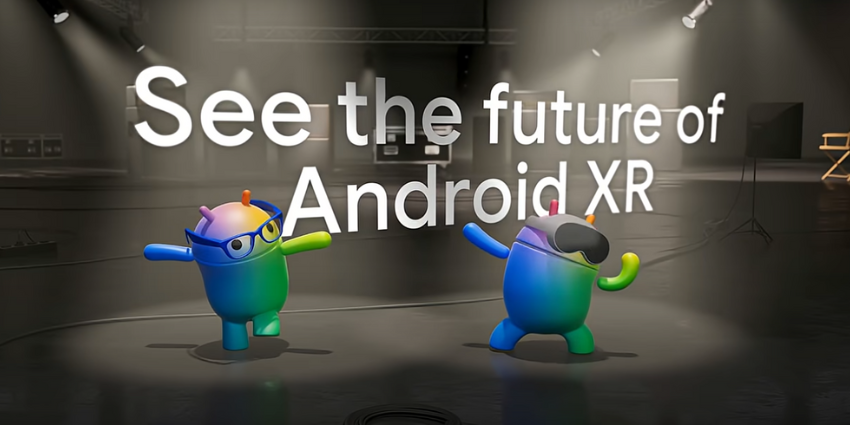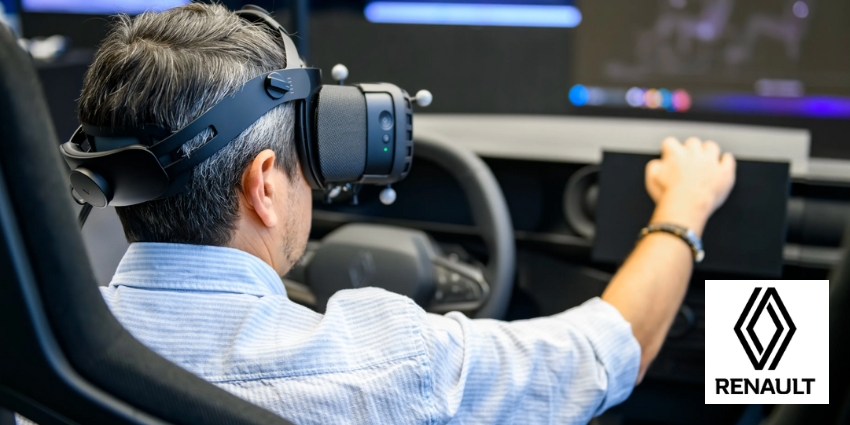Thinking of using haptics in business use cases? Now could be the perfect time to dive in. Haptic feedback technology isn’t just for games console controllers or smartphones anymore. It’s quickly making waves in the extended reality environment, introducing new levels of immersion to virtual workspaces, and training environments.
Although every company isn’t necessarily fighting for the chance to get their hands on the latest set of haptic gloves, or the world’s top haptic body suit, many are recognizing the benefits of bringing the sense of “feel” into one particular area: employee training.
Realistic haptic feedback devices, combined with XR technology allow companies to build training and development simulations that don’t just rely on text, auditory, or visual cues. Instead, employees can actually touch and interact with digital products, develop muscle memories, and experience what it really feels like to use new equipment from a distance.
It’s the ultimate new form of “hands-on” immersive training.
Haptics in Business Training: The Power of Touch
As enterprises continue to adopt extended reality for a wide range of use cases, they’re constantly looking for ways to make experiences more realistic and immersive. Great visuals and spatial audio only go so far – but haptics bring powerful, tactile sensations to every virtual interaction.
While haptic feedback technology can enhance various XR experiences, from metaverse customer interactions to collaborative meetings, training, and development, is where most tech leaders see the biggest opportunities.
Research constantly tells us that immersive, hands-on learning experiences heighten knowledge retention. If you need someone to confidently operate heavy machinery in a manufacturing plant or complete an intricate surgical procedure, you want them to practice in realistic conditions – ideally without the risks associated with “real-life” scenarios.
Embedding haptics in business training scenarios leads to:
Higher Engagement and Knowledge Retention
Studies show we learn best by “doing”. Feeling the weight of a scalpel or the resistance of a welding torch in a haptic simulation supercharges those “learning by doing” principles. For instance, in 2022, the National Library of Medicine published a report that showed students involved in a virtual “bone-drilling simulation” with haptic feedback outperformed their peers on a real-world task.
Haptic feedback also boosts our “connection” with the content we’re seeing, leading to higher emotional engagement levels which increase knowledge retention.
Faster Time to Proficiency (without the risk)
Haptic feedback eliminates the dangers or costs of real-world simulations. A healthcare professional can perform practice surgeries in virtual reality without sourcing costly cadavers or worrying about patient safety. Similarly, manufacturing trainees can learn welding or heavy-equipment operations in XR, with gloves simulating the exact feel of a tool.
This boosts safety, cuts downtime, and ensures that when employees do transition to the real world, they’ve already sharpened the relevant skills.
Improved Muscle Memory
By using haptics in business training environments, employees can build muscle memory faster. Realistic force feedback, vibrations, and temperature changes drive home exactly how a tool or component should feel.
That means less time spent fumbling with new processes and more time mastering them. Plus, trainers can collect real-time data, Like angles of movement or applied force, and deliver pinpoint feedback to each trainee, improving training experiences even further.
Examples of Haptics in Business XR Training: Across Industries
Countless companies are already experimenting with the power of immersive learning, using extended reality headsets to reduce costs and risks, and boost engagement. With haptics in business training scenarios, the benefits of immersive training are even greater because more of our senses are involved in the training process.
Here’s a closer look of some of the use cases for haptics in business training initiatives.
Government and Global Security
Training government teams, particularly those connected with citizen security and defense, can be extremely expensive and dangerous. Professionals need to be prepared to handle high-hazard scenarios – but running in-person simulations safely isn’t easy.
XR and haptic feedback tools offer an opportunity to enhance training without the risk. For instance, in 2023, HaptX partnered with the US government on a training program that incorporated haptic gloves into modules that taught trainees how to work with hazardous materials.
Trainees could feel genuine resistance through the gloves when manipulating virtual objects, which is vital for delicate or dangerous procedures. The result was a more prepared workforce, with less risk of radioactive exposure.
Heavy Industry: Energy and Beyond
When dealing with large machinery or hazardous environments, virtual training plays a critical role in boosting employee competency and safety. Haptics in business can revolutionize the training process, making it easier for employees to experience what it really feels like to work with crucial tools.
Haptic gloves like the TouchDIVER Pro, for instance, let trainees feel the weight, temperature, and even the temperature changes of the virtual objects they’re interacting with. This leads to a much more immersive training experience.
MAIZE, for instance, recently partnered with WEART on a VR training solution for the energy sector, which relies on haptic feedback to help professionals practice emergency procedures, and navigate complex machinery. These haptic systems automatically adapt to natural movement, and gather valuable data companies can use to build more efficient industrial workforces.
The Healthcare Sector: Transforming Training
Healthcare professionals rely heavily on hands-on experience. Practicing procedures is critical, but trainees can’t practice surgeries on actual patients, and cadavers are expensive. That’s where XR and haptics in business have become increasingly essential.
With haptics, employees can actually feel realistic force feedback, temperature changes, and tissue resistance in training sessions. Companies like MadVR have already started creating advanced surgical learning modules based on haptic feedback, intended to help medical professionals gain life-saving skills faster and more efficiently.
The great thing about this approach is there’s no risk. Because the environment is simulated, students can make errors safely and feel the tactile consequences of those errors, without actually causing harm to patients (or equipment). Plus, with haptic data, trainers can track how much force teams apply, or the angle of incision they use, to provide customized feedback.
Engineering and Manufacturing
In the engineering and manufacturing space, companies are already using haptics in business processes like product and prototype design. After all, with XR solutions, teams can create high-quality “digital twins” of products faster, share them with stakeholders, and more, without the cost.
With haptics, team members in different locations can virtually “handle” a prototype, feeling its weight and exploring features before they build a physical model. Plus, they can use digital twins to identify if components are too bulky, misaligned or ergonomically “off”.
But haptics can boost training experiences too. For instance, in 2024, HaptX and RoundTable learning partnered to create immersive training experiences for railway engineers. The system uses virtual reality, and touch-based feedback to show employees how to troubleshoot and repair complex products.
Realistic haptic cues help staff better understand force, weight, and fragility as they work on components. That can prevent costly errors or injuries once they transition to real locomotives.
Retail and Customer-Facing Environments
Companies embedding haptics in business training scenarios aren’t the only ones hiring employees who need to work with sensitive materials or complex equipment. We’re also seeing haptics emerging in more customer-facing roles, too.
Imagine onboarding new sales associates using a virtual store layout. With haptic gloves, they learn how to handle products, experience a realistic shelf setup, and even gauge the weight of delicate items before dealing with real customers.
We could even see the rise of more immersive product demonstrations, with haptic feedback accessories that allow customers to “test drive” products. For instance, HaptX previously teamed up with Nissan to create a haptic system that allows test-drivers to grip a virtual steering wheel.
Other customer-facing teams across industries can also use haptics to deliver remote support and service to customers. For instance, specialists could use a haptic interface to “show” a field technician the exact amount of torque needed on a bolt or the correct angle to insert a part.
With robotics and IoT, a technician could use a haptic glove, connected to a robotic arm to actually complete complex repairs from a distance.
Haptics in Business: The Future at Your Fingertips
The rising potential for haptics in business settings introduces a bright future for immersive enterprise training programs. By injecting a realistic sense of touch into virtual learning, haptic devices reduce the costs and dangers of hands-on education. More importantly, they bring back that invaluable human element, where learners can feel, experiment, and make mistakes safely.
Whether you’re ready to upskill your workforce in manufacturing, bring immersive surgical simulations to a hospital, or empower technicians with remote support capabilities, haptics can take your training to the next level.
The potential of haptic-backed training experiences is only beginning to unfold. As advanced user tracking and feedback technologies evolve, the line between virtual simulations and “real” life will continue to blur, introducing new opportunities for education. Ready to explore? Learn more about how user tracking and haptics are elevating the immersive workplace here.







